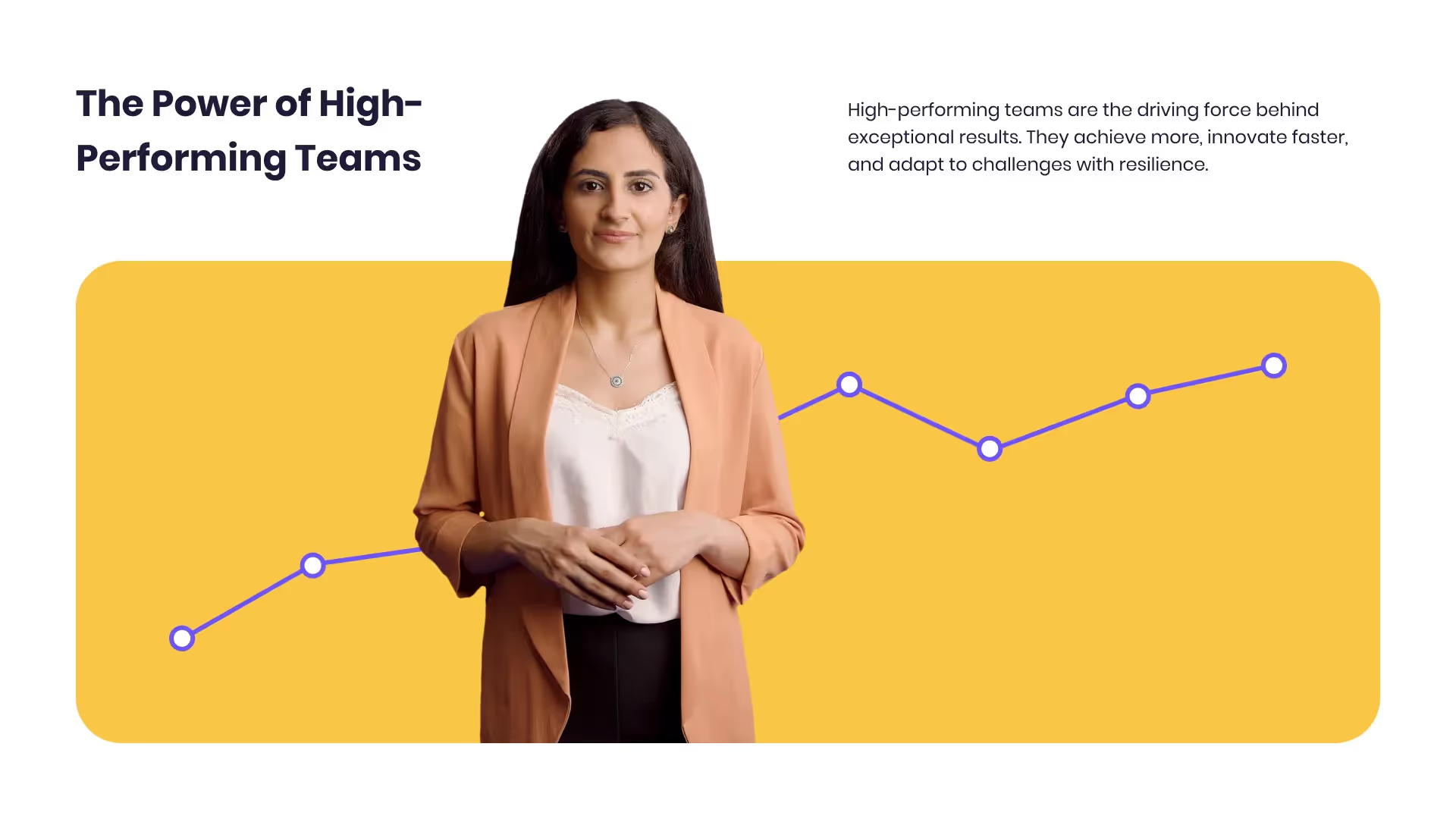.avif)
Want a personalised avatar?
Instant Avatars can be recorded using your phone or camera, and created in under a minute. These avatars are quick and easy to create, and they keep your original background and movements.

Employee Training System: A Complete Guide to Workforce Development

Introduction: Why Modern Employee Training Systems Matter
The workplace is evolving faster than ever. New technologies, compliance standards, hybrid teams, and shifting customer expectations are changing how organizations operate. To keep up, companies need more than occasional workshops - they need a scalable, engaging, and consistent employee training system.
An effective employee training system does more than deliver content. It drives workforce development, improves productivity, reduces turnover, and aligns employees with company goals. Whether you're onboarding new hires, upskilling current staff, or rolling out compliance programs, a modern training system ensures your teams are ready and capable.
This guide covers everything you need to know about employee training systems - from choosing the right platform to creating engaging content, measuring success, and avoiding common pitfalls. If you’re in HR, L&D, or operations, this is your playbook for building a smarter, more agile workforce.
What Is an Employee Training System?
An employee training system is a structured platform or process used to educate employees on skills, tools, policies, or job functions. It typically includes:
- Learning Management Systems (LMS): The backbone for hosting, tracking, and delivering content.
- Training Content: Videos, quizzes, documents, or interactive modules.
- Assessment Tools: Surveys, tests, or performance checks.
- Reporting & Analytics: Dashboards to track participation and effectiveness.
Modern systems are often cloud-based, mobile-friendly, and integrated with HR tools. They allow companies to personalize learning paths, automate progress tracking, and ensure that every employee receives the right training at the right time.
Benefits of an Employee Training System
A well-implemented system brings measurable benefits to employees and employers alike:
For the Business:
- Faster onboarding
- Reduced human error
- Increased employee productivity
- Easier compliance tracking
- Stronger internal communication
For Employees:
- Clear learning paths and skill progression
- Flexible, self-paced learning
- Higher engagement and confidence
- Recognition through certificates or badges
Real Example:
A mid-sized fintech company used Colossyan to automate onboarding through AI-generated training videos. New hires were up to speed in 50% less time, and turnover in the first 90 days dropped by 30%.
Key Features to Look for in a Training System
Choosing the right system depends on your organization’s needs, but look for these essentials:
- Ease of Use: A simple interface for both learners and administrators.
- AI Video Integration: Platforms like Colossyan let you create training videos instantly from scripts.
- Mobile Access: Enable learning from any device, anywhere.
- Localization Tools: Support multiple languages and cultural nuances.
- Progress Tracking: Real-time dashboards and reports.
- Content Flexibility: Upload PDFs, videos, quizzes, or use built-in authoring tools.
- LMS Integration: Ensure it connects with your existing systems (HRIS, Slack, Teams, etc.).
How to Build an Effective Employee Training System
You don’t need a massive budget or team to get started. Here’s a simple roadmap:
Step-by-Step Guide:
- Define Goals and KPIs
- Onboarding speed, certification rates, performance improvements
- Choose Your Platform
- Select an LMS or training tool that fits your needs and budget
- Create Content
- Use AI tools like Colossyan to generate videos for policies, SOPs, or role-specific training
- Structure Learning Paths
- Organize content by role, department, or seniority
- Test with a Pilot Group
- Gather feedback and refine the experience
- Launch and Communicate
- Promote internally and provide access/support
- Measure and Improve
- Track metrics and evolve the system over time
Common Challenges and Solutions
Even the best systems need tuning. Here are common issues and how to address them:
1. Low Engagement
- Use short, interactive videos and reward completion.
2. Outdated Content
- Regularly review materials. With Colossyan, update scripts and regenerate videos in minutes.
3. Lack of Manager Buy-In
- Show how training impacts performance and KPIs.
4. One-Size-Fits-All Approach
- Personalize by role, experience level, and language.
5. Tracking Issues
- Ensure your LMS has reliable reporting and integrates with your HR tools.
Best Practices for Long-Term Training Success
- Keep Content Fresh: Update frequently to reflect changes in tools or policy.
- Make It Visual: Use AI video and graphics to boost retention.
- Encourage Feedback: Let learners rate or comment on training materials.
- Celebrate Progress: Use badges, certificates, or shout-outs.
- Blend Modalities: Combine video, hands-on, and peer learning.
- Tie to Performance: Show how training links to individual and company goals.
Conclusion: Future-Proof Your Workforce with Smarter Training
An effective employee training system isn’t just about checking boxes. It’s a strategic investment in your people - and your business.
With modern tools like Colossyan, you can create high-quality, personalized training videos in minutes, reduce manual work, and deliver consistent education at scale. Whether you’re hiring fast, staying compliant, or leveling up your teams, the right training system gives you a competitive edge.
Investing in training today means building a more agile, resilient, and empowered workforce tomorrow.
Start building your employee training system - and future-proof your team.

Networking and Relationship Building
Use this template to produce videos on best practices for relationship building at work.

Developing high-performing teams
Customize this template with your leadership development training content.

Office conversation
Recreate realistic office scenarios using thisconversation-focused template.
Frequently asked questions
What is an employee training system?

An employee training system is a structured approach used by organizations to educate and develop their staff. It includes tools and technologies designed to facilitate learning and align employee capabilities with business goals.
How can an employee training system benefit my organization?

Employee training systems offer numerous benefits, including enhanced skill development, increased productivity, and improved employee engagement. These systems help align employee capabilities with organizational objectives, driving overall success.
What are some common challenges in implementing an employee training system?

Common challenges include resistance to change, lack of engagement, technical issues, and resource constraints. Addressing these challenges involves clear communication, personalized learning experiences, and robust technical support.
How can technology enhance employee training systems?

Technology enhances training systems by providing personalized learning experiences, interactive content, and data-driven insights. Tools like AI-driven platforms and gamification elements can boost engagement and effectiveness.
What trends should I be aware of in employee training systems?

Current trends include AI and machine learning, microlearning, gamification, and remote/hybrid learning solutions. These trends offer innovative ways to enhance training effectiveness and meet the evolving needs of the workforce.
Didn’t find the answer you were looking for?
















%20(1).avif)
.webp)

